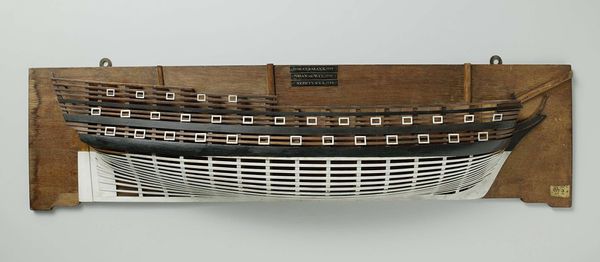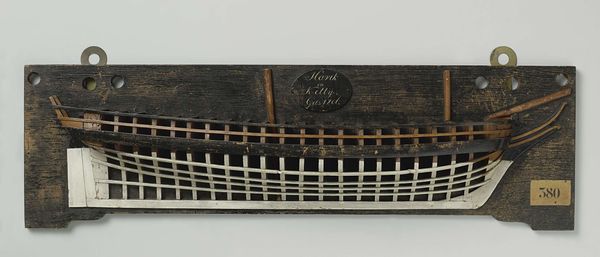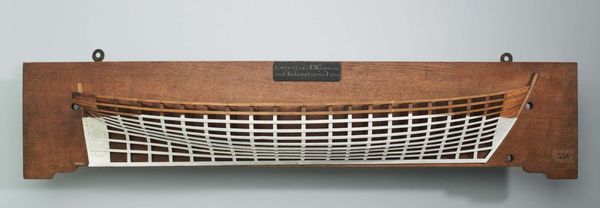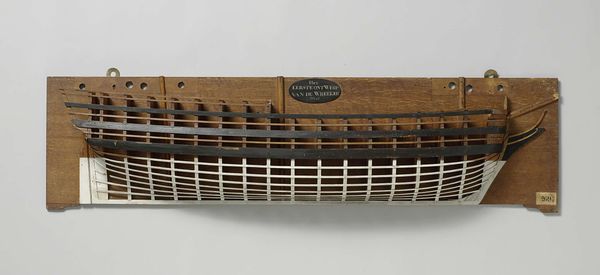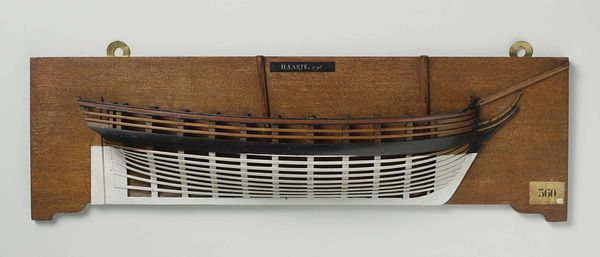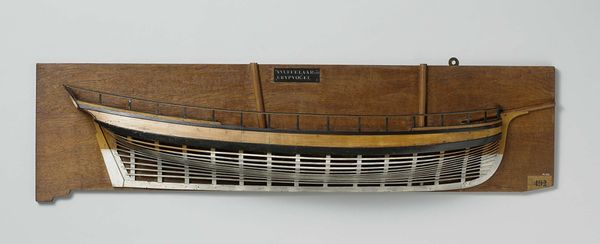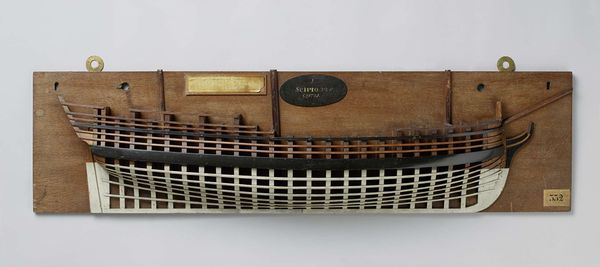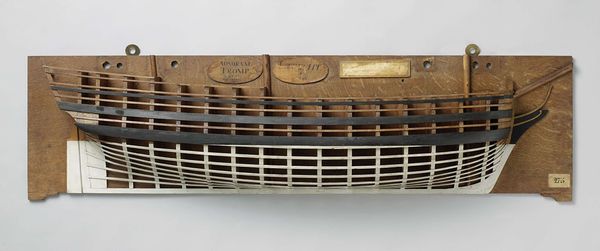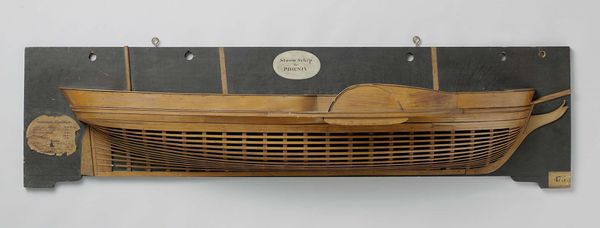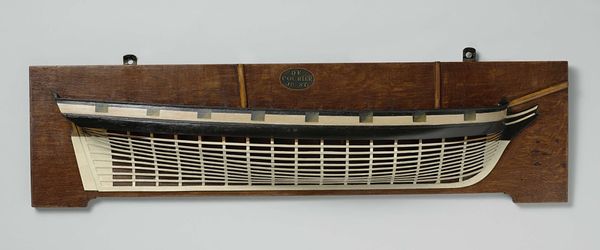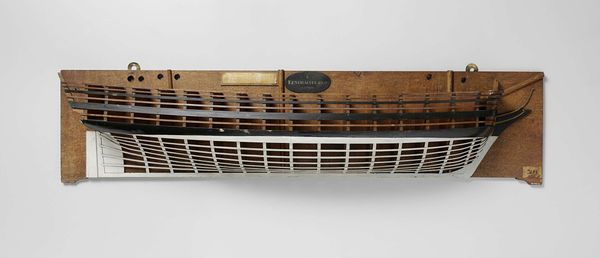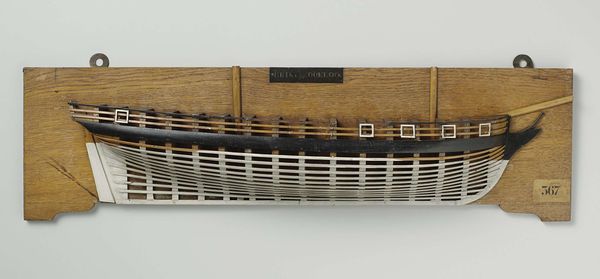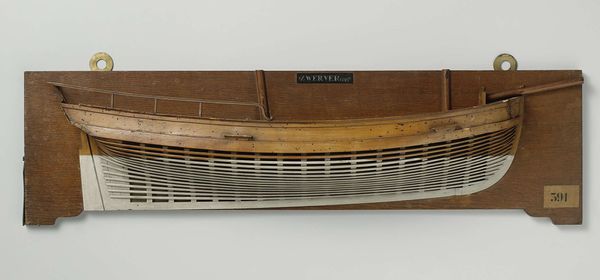
carving, sculpture, wood, architecture
#
3d model
#
carving
#
3d printed part
#
plastic material rendering
#
virtual 3d design
#
3d shape
#
sculpture
#
architecture model
#
3d modeling
#
wood
#
cut-out
#
mechanical engineering model
#
cutout
#
architecture
Dimensions: height 43.5 cm, width 142 cm, depth 19.5 cm
Copyright: Rijks Museum: Open Domain
Curator: We are looking at a “Half Model of a 74-Gun Ship of the Line,” created around 1782. It is crafted from wood and, through a process of carving, meticulously rendered the hull’s architecture. What are your first thoughts? Editor: The geometry is striking, a grid-like skeletal structure juxtaposed with the solid, dark hull. It is oddly satisfying and makes me think of industry, like a ship run efficiently, more of a well-oiled machine than something romantic and adventurous. Curator: The material, of course, is paramount. The choice of wood and the carving itself speak to the laborious processes inherent in shipbuilding at the time. Think about the vast forests being depleted and transformed by teams of shipwrights. Editor: Exactly. These ships were instrumental in geopolitical events. Naval power, then as now, was a crucial factor in empire-building and trade domination. Did this model perhaps influence that in any way? Curator: That's insightful. Half models like this served as templates for shipbuilders. Before blueprints, it offered a tangible three-dimensional design, allowing adjustments before full-scale construction. Consider it both functional art and technical document. Editor: It’s a fascinating intersection. By exhibiting something so inherently functional within the museum, we elevate the role of the anonymous craftspeople involved, spotlighting the socio-political role that this craftsmanship ultimately embodies. This, more than the vessel itself, illustrates that era and informs historical decisions. Curator: And let’s consider consumption: resources devoted to shipbuilding also demonstrate cultural values, power projection, and the infrastructure dedicated to material conversion in service to geopolitical aims. Editor: Absolutely. So what starts as appreciation for its form quickly shifts into recognizing the machinery and imperial power this object represents. I’ll be considering all the hands and political moves that this ship demanded and the world that that shaped it on my way out of here today. Curator: Yes, looking at this elegant, pared-down form helps reveal some very knotty intersections of art, labor and the politics of making.
Comments
No comments
Be the first to comment and join the conversation on the ultimate creative platform.
